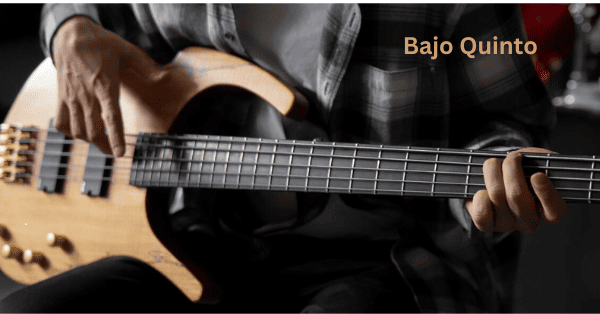The bajo quinto is an iconic instrument deeply rooted in Mexican musical traditions. Known for its distinct sound and role in regional genres, this instrument is a staple in conjuntos and norteño music. The Quinto continues to captivate musicians and listeners with a rich history and unique construction. Let’s dive into its origins, design, and indispensable role in music.
What is the Bajo Quinto?

The bajo quinto is a stringed instrument resembling a smaller guitar version with a richer sound. It features ten strings arranged in five courses of two each and is primarily tuned in octaves. Its deep resonance and punchy tones make it ideal for rhythmic accompaniment in Mexican folk and norteño music.
Origins of the Bajo Quinto
The traces back to European string instruments brought to the Americas during the colonial era. Over time, musicians adapted these instruments to suit regional music styles in Mexico, evolving them into the bajo we know today. Initially crafted by local artisans, it symbolised Mexican folk traditions, particularly in northern regions.
Construction and Design
The design of the bajo quinto is both functional and artistic.
Body: Made from various woods like cedar, mahogany, or rosewood, its hollow body enhances resonance.
Strings: The ten strings are typically steel, giving the instrument its bright and metallic tone.
Neck and Frets: The neck is shorter than a standard guitar, and the frets are spaced to accommodate its specific tuning and playstyle.
Decorative Elements: Many bajo quintos feature intricate inlays and carvings, showcasing the craftsmanship of their makers.
Tuning and Playing Style
The quinto tunes in fourths, starting with a low A and progressing to D, G, C, and F. This tuning enables a wide range of chords and basslines, making it versatile for various musical applications.
Players often use a pick to strum aggressively, producing rhythmic patterns that complement the melodies of other instruments like the accordion or violin.
Role in Mexican Music
The quinto is a cornerstone of norteño and conjunto music, originatingMexico. It serves as a rhythmic foundation, providing a steady beat and harmonic support for the ensemble.
In addition to its role in ensembles, solo performances showcase its ability to produce intricate melodies and dynamic rhythms, adding depth to any musical piece.
Cultural Significance
Beyond its musical contributions, the bajo quinto represents Mexican cultural identity. Its presence in songs of love, struggle, and celebration highlights its importance in storytelling. Whether accompanying a lively dance tune or a heartfelt ballad, it remains integral to Mexican tradition.
Evolution of the Instrument
Modern bajo quintos have seen innovations in design and construction. Some musicians now use electric pickups to amplify their sound, allowing the instrument to blend seamlessly with contemporary music styles. Traditional craftsmanship continues to thrive despite these advancements, preserving the instrument’s heritage.
Learning
For aspiring musicians, the bajo quinto offers a rewarding challenge. Its unique tuning and playing techniques require dedication, but its versatility makes it a joy to learn. Lessons are readily available online, and many communities have experienced players who pass their knowledge to younger generations.
Conclusion
The bajo quinto is more than just an instrument; it is a vibrant voice of Mexican culture. Its deep, resonant tones and rhythmic capabilities make it a vital part of musical traditions that continue to inspire audiences worldwide. Whether in a lively conjunto performance or a soulful norteño ballad, it remains a timeless symbol of musical artistry.
FAQs
Q1: What genres feature the bajo quinto?
It is commonly used in norteño, conjunto, and other regional Mexican music styles.
Q2: How does the bajo quinto differ from a guitar?
While similar in appearance, it has ten strings arranged in five pairs, producing a deeper and more resonant sound than a guitar.
Q3: Can you play melodies on the bajo quinto?
While primarily a rhythm instrument, skilled players can perform intricate melodies on it.
Q4: Is the bajo quinto used outside of Mexican music?
While it is primarily associated with Mexican genres, the Quinto has occasionally been used in fusion music styles that blend regional sounds.
Q5: How do I start learning the bajo quinto?
You can begin by studying its unique tuning and basic chords, and many online tutorials and instructional videos cater to beginners.



